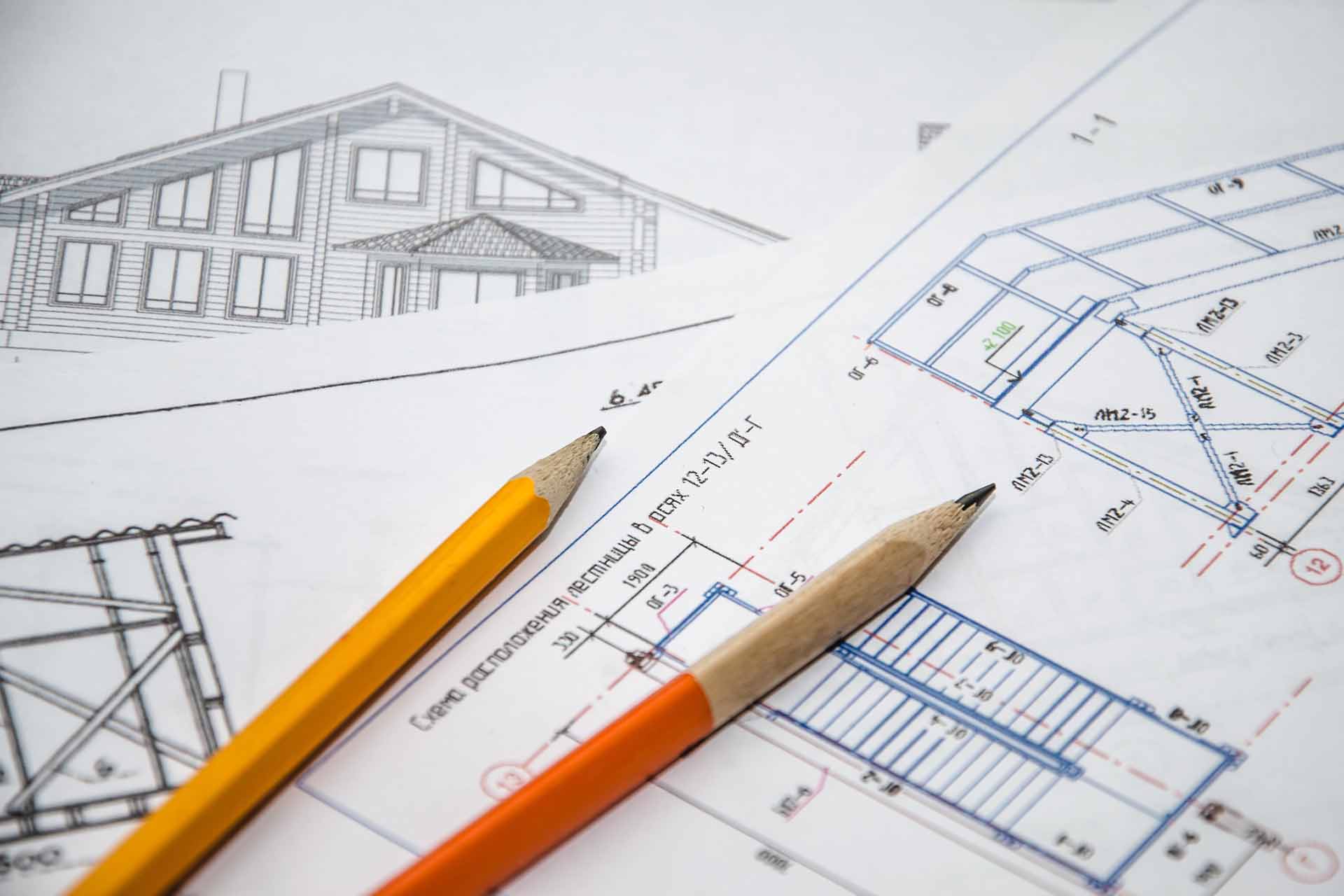Architect Advice on Utilizing Tight Urban Spaces
Architect Advice on Utilizing Tight Urban Spaces
Blog Article
Comprehending the Diverse Career Paths Available for Aspiring Architect
As an aspiring Architect, you have a world of profession courses waiting for you. Whether you're drawn to conventional style or the nuances of lasting style, there's a specific niche that lines up with your passions.
Standard Architecture: Creating Structures and buildings
Traditional architecture focuses on developing buildings and frameworks that blend functionality with aesthetic appeal. Your styles can mirror social heritage, showcasing regional customs while meeting modern needs.
You'll establish abilities in preparing, model-making, and website evaluation, permitting you to visualize and communicate your concepts efficiently. Engaging with customers, you'll need to comprehend their vision and translate it right into viable styles.
In addition, building codes and sustainability practices are important in your work, ensuring your structures are environmentally pleasant and secure. As you grow in your occupation, you'll find opportunities in property, commercial, or also remediation tasks, each offering distinct difficulties. Welcoming typical architecture leads the way for a satisfying occupation that pays tribute to the past while shaping the future.
Urban Preparation: Shaping Communities and Public Spaces
As a hopeful Architect, you can play a vital duty as a city coordinator, transforming exactly how communities interact and work. By employing neighborhood involvement techniques, you'll assure that residents have a voice fit their atmosphere. And also, incorporating lasting style concepts will assist create spaces that not only meet today's needs but also protect the future.
Function of Urban Planners
While lots of could believe of engineers as the single visionaries behind structures, city organizers play a necessary function in shaping the broader landscape of communities and public rooms. By teaming up with numerous stakeholders, you'll aid design parks, transportation systems, and residential locations that promote social communication and ease of access. Your expertise in spatial style and community dynamics enables you to envision future growth while preserving social heritage.
Area Engagement Strategies
Efficient area involvement approaches are vital for urban planners to ensure that the voices of citizens are listened to and valued in the planning procedure. To cultivate purposeful dialogue, you must prioritize open forums and workshops where area participants can reveal their ideas and worries. By actively listening and including responses, you'll create spaces that mirror the area's needs, eventually leading to even more sustainable and successful metropolitan atmospheres.
Lasting Layout Concepts
When making urban spaces, incorporating sustainable design concepts is vital for producing atmospheres that grow both environmentally and socially. You must begin by concentrating on energy effectiveness, utilizing materials that decrease waste and advertise recycling. Think about incorporating green spaces, like gardens and parks, to boost biodiversity and boost air high quality. Promoting walkability and public transport can lessen reliance on cars, fostering a much healthier community.
Designing with water conservation in mind is likewise key-- believe concerning rain yards and permeable surfaces to take care of stormwater. Involving area participants during the preparation process assurances that the rooms you produce meet their needs and urge social communication. By embracing these principles, you'll add to lively, lasting metropolitan landscapes that profit everybody.

Landscape Architecture: Developing Lasting Outdoor Atmospheres
As you explore landscape style, you'll uncover necessary layout principles that create practical and lovely outdoor rooms. Lasting methods play a vital role in making certain these atmospheres prosper while lessening ecological impact. And also, you'll locate a range of profession opportunities that allow you to make a genuine difference in just how individuals communicate with nature.
Design Principles in Landscape
Understanding style principles in landscape design is essential for creating lasting outdoor environments that harmonize with nature. You'll need to contemplate aspects like balance, percentage, and range to assure your designs feel natural and welcoming. Including indigenous plants not just boosts biodiversity however likewise lowers water usage, making your landscape resistant. Assume concerning the flow of room and just how people communicate with it; paths and seating areas ought to invite exploration and relaxation. Furthermore, focus on seasonal adjustments, developing with materials that complement the environments year-round (Architect). By prioritizing sustainability and appearances, you can produce outside spaces that improve the neighborhood and promote wellness. Embracing these principles will set a strong foundation for your job in landscape style.
Lasting Practices Review
Sustainable methods in landscape design not just concentrate on aesthetics however additionally prioritize ecological health and resource conservation. By incorporating native plants, you boost biodiversity and minimize the need for chemical plant foods and pesticides. Implementing efficient irrigation systems helps preserve water and decreases runoff, safeguarding close-by ecosystems. You can develop areas that promote dirt wellness, such as exercising and utilizing natural products permaculture principles. Furthermore, integrating environment-friendly facilities, like rain gardens and permeable sidewalks, aids in stormwater management and lowers metropolitan warmth. You contribute to a much healthier earth and offer spaces that foster area link when you create outside atmospheres with sustainability in mind. Inevitably, these practices assure your layouts benefit both people and the atmosphere for years to come.
Career Opportunities Expedition
With a strong structure in lasting techniques, landscape find more information architecture provides a variety of profession paths that permit you to make a purposeful influence on the environment. Urban coordinators usually collaborate with landscape engineers to create green rooms in urban settings, improving city livability. If you're passionate about education, take into consideration coming to be a landscape design teacher, motivating future generations.
Lasting Design: Concentrating On Eco-Friendly Practices
As you discover your profession in style, accepting eco-friendly techniques can establish you apart in an affordable area. Lasting layout concentrates on developing structures that lessen environmental impact while improving owner health. By incorporating sustainable products, energy-efficient systems, and sustainable building strategies, you'll add to a greener future.
Start by acquiring understanding of eco-friendly certifications like LEED or BREEAM, which can strengthen your credentials. Consider how natural light, air flow, and thermal efficiency can enhance style. Work together with designers and environmental experts to introduce solutions that minimize waste and save resources.
Do not forget the value of area involvement-- interesting local stakeholders can motivate designs that balance with the setting. As clients increasingly focus on sustainability, your knowledge in green practices will not just bring in jobs yet also fulfill your passion for accountable design. Embrace this critical facet of the profession, and enjoy your profession flourish.
Historical Conservation: Safeguarding and Restoring Social Heritage
While you commence on your architectural journey, think about the essential duty of historic conservation in preserving our social heritage. This field concentrates on the defense and remediation of considerable buildings, sites, and frameworks that tell the tales of our past. By participating in historic preservation, you'll help secure the building legacy that forms neighborhood identity.
As a historic conservation Architect, you'll evaluate historical value and analyze the problem of frameworks. You'll work carefully with preservationists and chroniclers to assure genuine restoration methods are utilized. This occupation course allows you to blend creative thinking with study, allowing you to develop services that value original products and workmanship.
Your work not just contributes to sustainability by recycling existing buildings yet likewise cultivates a sense of pride within areas. Welcoming this course will certainly assist you become a guardian of background, preserving the tales and appearances that improve our lives.
Interior Architecture: Enhancing Indoor Spaces
Historical conservation and indoor design both share a commitment to enhancing the built setting, yet they concentrate on various aspects. While historical preservation highlights preserving a framework's historic and cultural worth, interior design absolutely nos in on enhancing interior rooms for functionality and appearances.
As an aspiring Architect, you'll discover that indoor architecture allows you to blend imagination with technical skills. You'll create spaces that not just look good but additionally promote convenience and performance. This area involves understanding exactly how light, shade, and products interact within a space, influencing mood and usability.
You'll deal with different projects, from household homes to commercial workplaces, guaranteeing that each environment satisfies the requirements of its residents. By prioritizing customer experience, you can change interiors right into inspiring and practical areas, making a substantial effect on exactly how people connect with their environments. Welcome the opportunity to improve indoor settings and form the means individuals function and live.
Industrial Design: Merging Performance With Visual Appeals
Commercial layout plays a vital role in creating products that flawlessly blend appearances with performance, making sure that what you make use of daily is not only aesthetically attractive yet additionally functional. As an aspiring Architect, you can involve on your own in this area, concentrating on developing every little thing from furniture to customer electronic devices. Your work entails comprehending individual demands, materials, and producing processes, permitting you to produce ingenious options that improve daily experiences.
In industrial style, you'll frequently collaborate with marketing experts, designers, and producers, making Visit Your URL certain that your styles are not just lovely yet additionally viable. This occupation course supplies a dynamic environment where creative thinking fulfills practicality, making it a satisfying option for engineers interested in forming the products company website of tomorrow.
Often Asked Questions
What Educational Certifications Do I Need to Come To Be an Architect?
To become a designer, you'll require a specialist level in architecture, commonly a Bachelor's or Master's. Furthermore, you'll need to finish an internship and pass the Architect Registration Examination to practice lawfully.
Exist Qualification Requirements for Different Building Career Paths?
Yes, there're certification demands for different architectural paths. Architect. You'll require to pass examinations, total internships, and sometimes go after specialized training, depending upon your picked emphasis, like landscape style, city design, or historical preservation
What Software Application Abilities Are Important for Architects Today?

Just How Can I Gain Practical Experience While Researching Architecture?
You can acquire practical experience by interning at architectural companies, joining layout competitions, volunteering for neighborhood jobs, or working together with classmates on real-world projects. These possibilities boost your skills and develop beneficial connections in the industry.
What Job Opportunities Exist Outside Traditional Architecture Firms?
You can explore various job possibilities outside conventional style companies, like metropolitan planning, interior decoration, landscape design, building administration, real estate advancement, and even duties in sustainability consulting. Each offers special obstacles and rewards.
Whether you're drawn to standard design or the subtleties of sustainable design, there's a specific niche that aligns with your passions.When making city rooms, integrating lasting layout principles is vital for producing atmospheres that flourish both environmentally and socially.As you discover landscape architecture, you'll uncover crucial style principles that develop functional and attractive exterior areas.Comprehending design concepts in landscape architecture is necessary for developing lasting outside atmospheres that balance with nature.In industrial layout, you'll often team up with engineers, marketers, and producers, making certain that your layouts are not only beautiful yet also feasible.
Report this page